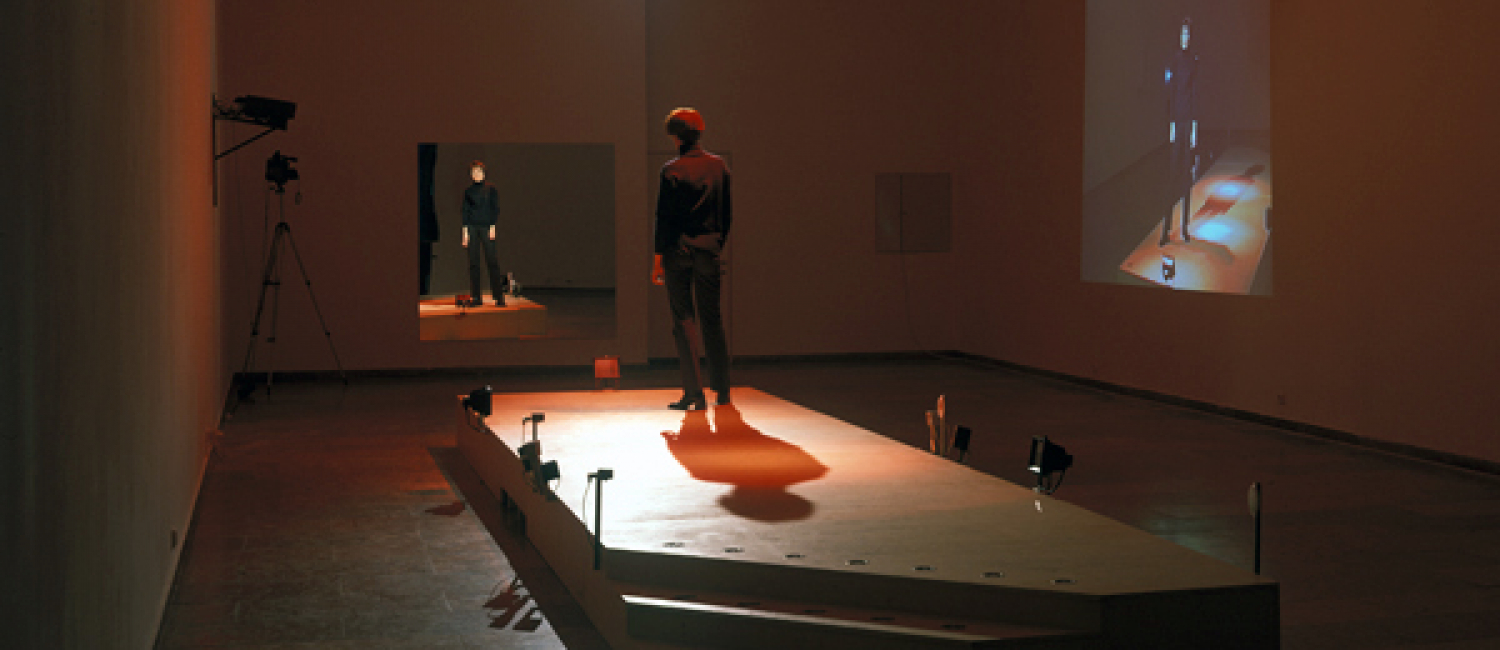While thinking about the concept of the exhibition of Ilona Németh and Péter Rónai, I was inspired by the montages of Sergej Mikhailovich Eizenstein – the classic of Russian and world cinematography. The theory of montage is based upon the “congruencies of emotionally strong pictures that do not seem to be related to each other, but that is why they form a new meaning at the end.” The montage formula 1+1=3 evokes the idea of a dialogue between two personalities with individual visual expressions, which create a new quality in a common context. It also refers to the relationship between the artists and the curator of this exhibition. As both artists work with multimedia art, where it is essential to get the spectator involved, he/she also has to be added to the formula. The observer plays one of the main roles in the installations of Ilona Németh and Peter Rónai and contributes to the final version. His/her usual role is that the observer becomes the actor or performer. This also means that the physical presence of the spectator during the performances becomes a must.
Both artists are concerned in questions of identity and its changes in media manipulated world, where the high art mixes with mass culture being present in every layers of the society.
In Rónai’s case, the questions concerning identity are tightly connected to his human and artistic subject and form his individual mythology. The presented video-installations and video objects relate to his autobiography and the years he had spent in Budapest as a child. The typical displays – LCD, small displays with liquid crystals, or tiny video camera – are smartly installed into all kinds of adjusted ordinary household tools.
On one of the video shots, Rónai’s post-photographic self-portraits from his early childhood to present, are shown by turns. Then a video object is waiting for the spectator to take over his own video portrait and another videoshot is showing the authors memories of his youth. In the mixture of different fragments and found texts, he quotes Hungarian writers – Endre Ady, Sándor Petőfi, Frigyes Karinthy, János Arany, or the avant-garde Lajos Kassák. Herewith, he proves of his sense for satirical games with text fragments, the result of which sometimes gives sense, but very often it is just nonsense.
Rónai places his video camera into the installation of Ilona Németh, to shoot the performances of the spectators on the catwalk. The performance of the anonymous “stars” who are thus given a chance to experience their “fifteen minutes of fame” in the middle of spotlights, flashlights and music, is shown over the large video-projector. This again enriches the art object with new visual qualities and social meaning. The spectacle is multiplied and so is the experience with the ambivalent nature of media. On one hand, they broaden the possibilities for creativity included some positive motion towards understanding modern art, but on the other hand, they represent means of manipulation and control. They also reflect the relationship between subject and object, presentation and image. They reflect to the transformation of human identity and test our courage to preserve ours. They point at our desires and vanity of the present, marked by growing visualisation of everyday life and manipulated by advertising, media and politics, which intrude upon the relationship between private and public.

